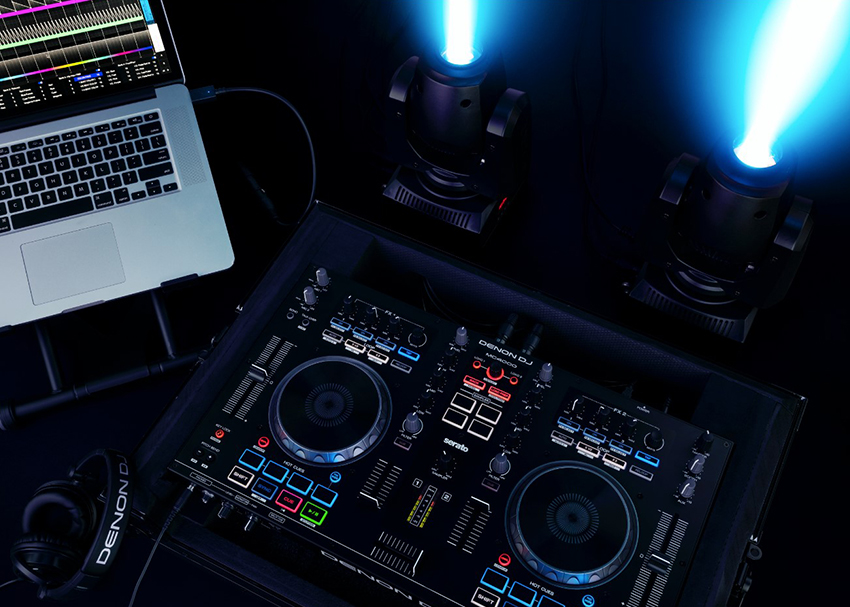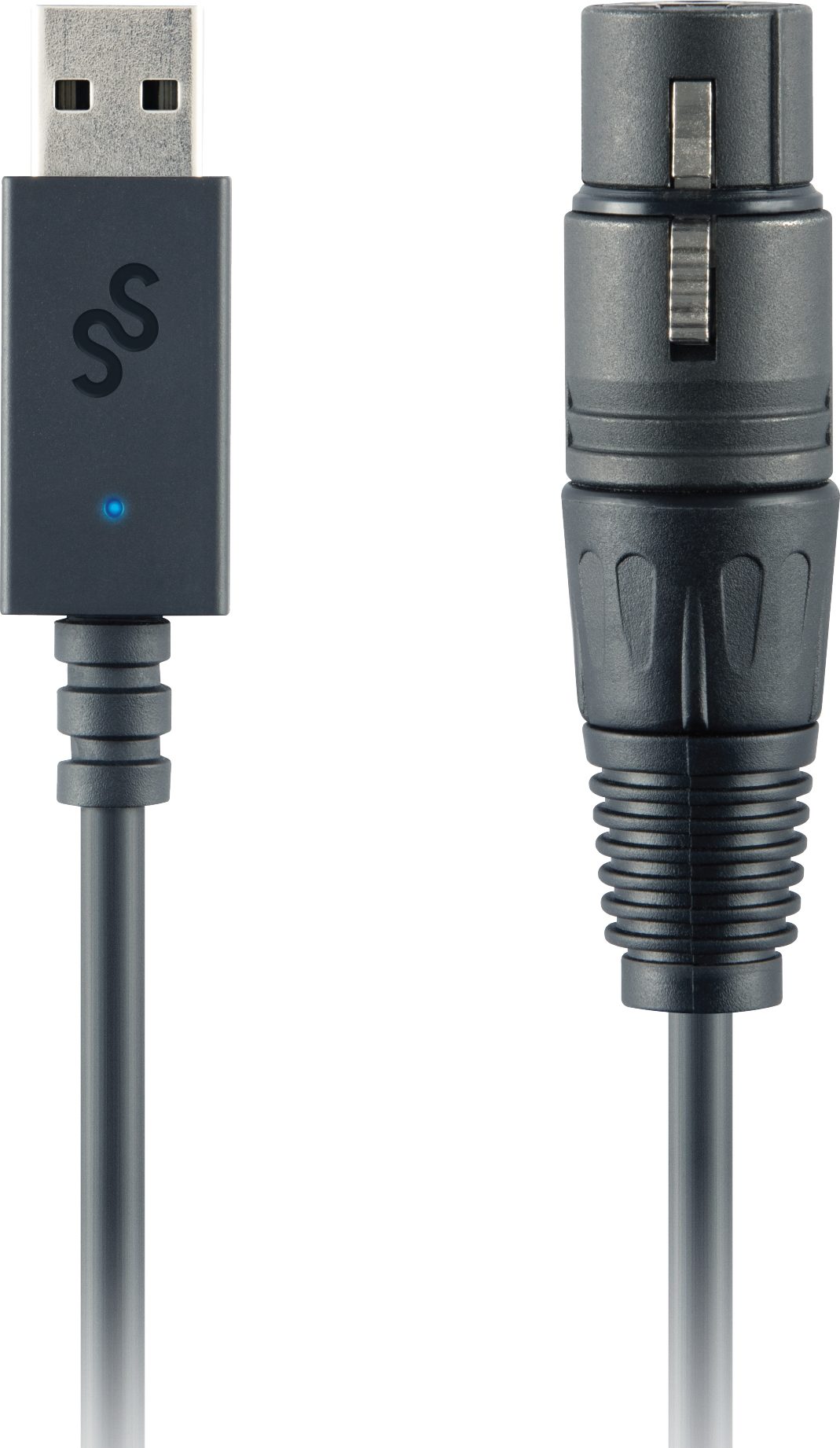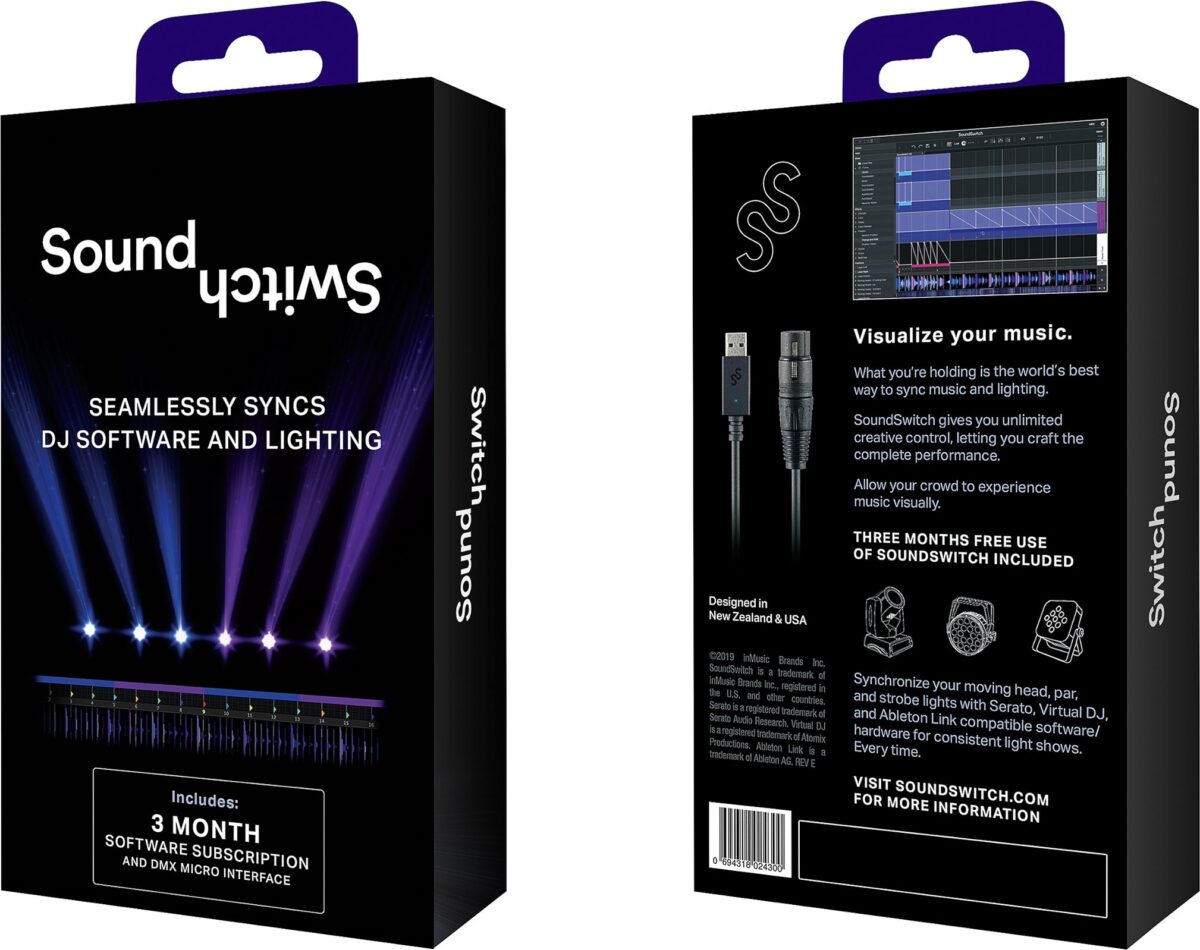SoundSwitch is a powerful tool that can be used to send DMX lighting signals from software on your PC or Mac. Way more than just a digital lightboard, SoundSwitch gives you the ability to create a custom light show to your music library, or it can automatically apply auto light show analysis. There are two things to cover before getting started with SoundSwitch. First, your lights need to be set to slave mode. Secondly, you need to understand how to DMX address your lighting. DMX addressing allows you to set controllable parameters on each lighting fixture when you have multiple lights daisy-chained together.
SoundSwitch lets you assign lighting commands to specific tunes that have been analyzed on a grid. The software can be used with Serato DJ, VDJ 8, Ableton Live, and Traktor Pro 2 via Ableton Link. It can also be used directly with the Denon Prime 4 and SC series.
This post is an overview of SoundSwitch. At a later date, we will take a look at using it with a Denon standalone unit, Virtual DJ, Serato, and MIDI controllers. Setting up SoundSwitch is very simple. In the box, you get an adapter that will allow you to hook up a DMX lighting cable to a USB A connector to connect to your computer. For most setups, all you need is a USB cable to connect the computer to your DJ controller.
Edit and Perform
SoundSwitch software has two modes: edit and perform. Edit mode is where you can set up your venues, software DMX addressing, individual lighting settings, editing beat grids on songs from your library, automate lighting or create changes to a song’s lighting arrangement. The list keeps going, but those are the major options.
When you’re ready to DJ, set the SoundSwitch software to performance mode. Performance mode allows the lights to receive the present DMX information when you open up either Serato or Virtual DJ. Performance mode uses the predetermined DMX data, as well as fader and crossfader movements to ensure that each lighting performance blends well together.
Venue Control
One of my favorite features of the software is the ability to create multiple “venues.” Mobile DJs with different lighting setups for different events — I’m looking at you. Store multiple setup information so changes can be made with no effort. Each venue retains its own DMX settings and lighting arrangements, and venues can easily be loaded for any gig. This is perfect for a DJ who has a residency at a venue with an existing lighting system but also has an independent mobile lighting rig.
When setting up these lights, you can pick through a list of lighting fixtures that are already included. This is super helpful, to get a light show going, especially with a limited amount of DMX addressing knowledge. In some cases, lights can be run with extended DMX ranges that let you control more elements of the fixture. As you enter in each light fixture, it will block out each section of the DMX map. For me, this makes the visualization of a lighting rig so much easier.
SoundSwitch is a powerful tool for customizing lighting for any venue setting. Most importantly, it is customized to your music. It lowers the barrier to entry for absolute beginners but also caters to the most advanced lighting professional. In upcoming posts, we’ll discuss more of the intricacies of programming lights and how SoundSwitch works with different DJ software.






Leave a Reply